Certain beliefs are so widely and deeply entrenched in our sport that they’re essentially considered givens, and rarely, if ever, called into question. One of the most closely held says that fly pattern matters. Matters in terms of success. We’re taught to believe that our choice of fly is responsible for the fish we catch, and that if we merely find the right fly, our success will know no bounds. But does it really work that way? Is our choice of fly that critical? Good question.
In order for fly pattern to matter, to be the sole factor underpinning our success, it must first be made the limiting factor. By that I mean all other variables in the game are accounted for. Imagine for the moment that we’re fishing to a feeding trout on the Madison River. For our fly to make the difference, several things need to happen. Our approach to the fish must go unnoticed. Our casts must be accurate and timely. The fly should float free of drag (unless intentional). In short, we have to fish flawlessly. Only then can we properly attribute success or failure directly to fly pattern.
If these or any of the other numerous variables that routinely present themselves on-stream aren’t accounted for, we simply can’t definitively say that our fly is making the difference. (Well, we could, and often do, but we’d be wrong.) And herein lies the rub. Very, very few anglers possess the skills and ability to make the fly the limiting factor. If on a regular basis you’re one of them, congratulations. You’re operating in rarefied air—air reserved for the masters of this sport. Most of us will never attain that level, which means that some other aspect of our fishing—presentation, usually—jumps to the fore and compromises our success. Am I suggesting then that we simply fish whatever fly we want, whenever we want? Not at all, though if you’re so inclined that’s certainly one way to proceed. I think there’s more to it than that. While we may not own the skills to make the fly the limiting factor all the time, the flies of the average angler will still act as the limiting factor some of the time.
Here’s how. If we accept the premise that casting skill is the primary limiting factor for most of us (a premise virtually all professionals accept), it will be no surprise that during a day’s fishing most of the casts we make will in some respect be flawed. But not every cast. Even the most inexperienced anglers among us will make a number of good presentations during a day’s fishing (if only by dint of random, good fortune). When these occur at the right place and time, it’s possible that the fly pattern could make a difference.
Given this, I think a sound strategy entails using a fly that fits the situation we find ourselves in, and then not worrying about it. If there’s a Baetis mayfly hatch taking place, fish a Baetis imitation. If fish are eating caddis, use a caddis. But don’t get carried away thinking that a specific Baetis or specific caddis pattern are needed. They aren’t. There are dozens of examples of both that will work just fine, and the fish don’t care on which one they get caught. When fish aren’t feeding on a specific insect, we have even more room to maneuver. Just pick an appropriate size and style of fly for the water and season you’re fishing—could be a nymph, streamer, attractor dry, whatever—and fish it with all the skill you can muster.
This doesn’t mean that there aren’t relevant differences among flies. There are plenty of reasons you might choose one pattern over another, but these stem strictly from the fisherman’s point of view. For example, I favor a Sparkle Dun for my Baetis fishing. I like this pattern because it imitates both an emerger and a dun, it floats well, it’s highly visible, and possesses great durability. But I harbor no illusions that it’s the only pattern that will catch trout when they’re feeding on Baetis. It’s merely my preferred fly.
In the end, I believe it’s safe to say that fly pattern can matter, but not nearly as often as we think (or as we’re told). Choose a fly pattern that suits your fishing and then fish it with the utmost care. Make your presentations count. That’s something that really does matter.




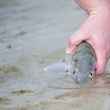















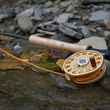
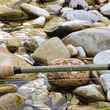




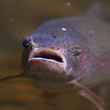

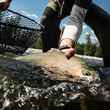

Comments
Eric replied on Permalink
I would think it nearly impossible for there to be a situation in which the fly is the only limiting factor. To me, there will always be an environmental variable to it. Temperature, wind, angling pressure, etc. However, in my experience, fly selection is always a secondary consideration to fly presentation. Typically, if I put a fly where it needs to be, regardless of pattern, it will produce fish. Just my 2 cents.
Dollar General and Michael's C... replied on Permalink
All hail the mop fly.
Flip replied on Permalink
"It's not the fly, you suck."
Bob Wyatt replied on Permalink
Excellent piece, John. Couldn't agree more.
David Deming replied on Permalink
Mountain streams with wild trout give opportunity to test whether the fly matters as approach and short casts allow variables to be reduced to fly and presentation. If presentation is good in the those pockets and you are having success, switch to totally different fly and see if it matters.
Pages